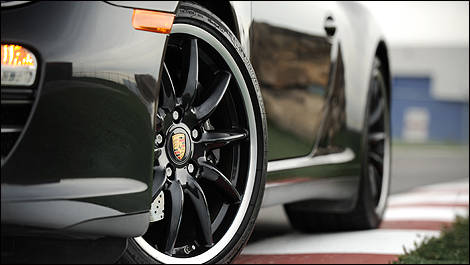Well they are, otherwise, we’d have a serious mess of stalled cars on roads everywhere… OK, this makes no sense, but what I’m trying to say is that not all tires are measured equally. Will I please get to the point? Sure.
Have you ever noticed that your car, with its replacement tires (the set you buy to replace the original equipment rubbers), although of the same make, model and size, have never performed or handled as well as the originals?
Have you ever heard of the fact that the tires you get with your car are not the same ones that you can buy off the shelf?
Both of these anecdotes have some truth to them, and both relate to the same key important fact: Tires, for car manufacturers, are measured for conicity. Tires sold to you and I are not.
What is conicity? It is a mild manufacturing anomaly where a tire's tread is cured in a slightly conical shape rather than in a uniform, cylindrical shape. Actually, most (if not all) tires have some degree of conicity in them.
The difference is that new car manufacturers want conicity to be measured and used in their favour. Conicity is indicated by a “-” or a “+“ which indicates whether a tire “pulls” to the left (-) or the right (+). As an example, a car builder may want two of each on each side in order to improve a car’s overall handling abilities. How’s that for cheating?
It isn’t really cheating, but the fact that you and I, as regular consumers, cannot get this type of information when buying new tires, is somewhat unfortunate.
This leads me to add that if you want to maintain or improve on your car’s current handling abilities, the only real way is to purchase far better -- and therefore more expensive -- tires. A lateral move or even selecting a slightly higher performing tire may not generate the desired results.
Have you ever noticed that your car, with its replacement tires (the set you buy to replace the original equipment rubbers), although of the same make, model and size, have never performed or handled as well as the originals?
Have you ever heard of the fact that the tires you get with your car are not the same ones that you can buy off the shelf?
Both of these anecdotes have some truth to them, and both relate to the same key important fact: Tires, for car manufacturers, are measured for conicity. Tires sold to you and I are not.
What is conicity? It is a mild manufacturing anomaly where a tire's tread is cured in a slightly conical shape rather than in a uniform, cylindrical shape. Actually, most (if not all) tires have some degree of conicity in them.
The difference is that new car manufacturers want conicity to be measured and used in their favour. Conicity is indicated by a “-” or a “+“ which indicates whether a tire “pulls” to the left (-) or the right (+). As an example, a car builder may want two of each on each side in order to improve a car’s overall handling abilities. How’s that for cheating?
It isn’t really cheating, but the fact that you and I, as regular consumers, cannot get this type of information when buying new tires, is somewhat unfortunate.
This leads me to add that if you want to maintain or improve on your car’s current handling abilities, the only real way is to purchase far better -- and therefore more expensive -- tires. A lateral move or even selecting a slightly higher performing tire may not generate the desired results.
 |
| Photo: Matthieu Lambert |


